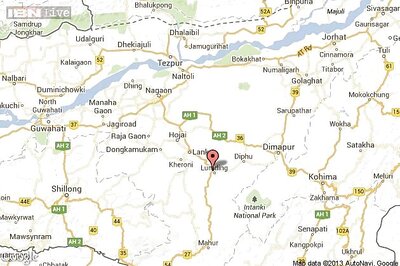
views
Honolulu: An airplane powered by the sun is scheduled to land in Hawaii on Friday after a five-day journey
across the Pacific from Japan.
The flight is the longest leg of an around-the-world voyage planned by two Swiss pilots who have been taking turns flying the single-seat airplane. It is also the riskiest because the plane has nowhere to land in an emergency.
One of the pilots, Andre Borschberg, broke the record for the longest nonstop solo flight on the way to Hawaii, the team
organising the trip said.
He shattered the previous record set by the late US adventurer Steve Fossett, who flew around the world in 76 hours in a specially designed jet in 2006.
"Can you imagine that a solar-powered airplane without fuel can now fly longer than a jet plane?" Bertrand Piccard, the aircraft's other pilot, said in a statement. "This is a clear message that clean technologies can achieve impossible
goals."
The plane is visiting Hawaii just as the state has embarked on its own ambitious clean energy project. Gov David Ige last month signed legislation directing the state's utilities to generate 100 per cent of their electricity from renewable energy resources by 2045.
Hawaii's utilities currently get 21 per cent of their power from renewable sources.
The aircraft is scheduled to land at a small airport outside Honolulu about 6 AM (local time) on Friday. Flight officials said the aircraft was arriving in the Hawaii area earlier but would fly in a holding pattern until the scheduled landing time.
Its next destination after leaving the islands is Phoenix, but the departure date hasn't been announced. The plane began its global voyage in abu Dhabi in March. It has stopped in Oman, India, Myanmar, China and Japan in the
months since.
The wings of the carbon fiber aircraft have more than 17,000 solar cells. The plane flies up to about 28,000 feet during the day to recharge its batteries while descending to under 10,000 feet at night to minimise power consumption.
Bad weather is a challenge because the plane isn't designed to withstand rain, turbulence and heavy winds. Diverting around clouds takes extra energy.
The aircraft travels at about the same speeds as an automobile. The pilots aim to demonstrate the potential of energy efficiency and renewable power with the project.
Solar-powered air travel is not yet commercially practical though, given the slow travel time, weather and weight constraints of the aircraft.
















Comments
0 comment